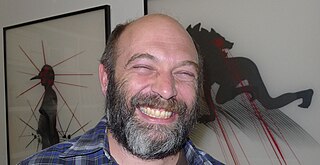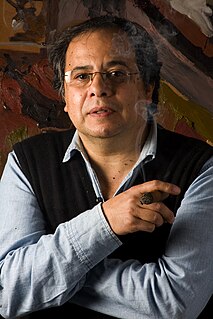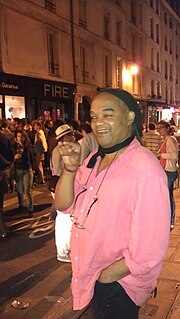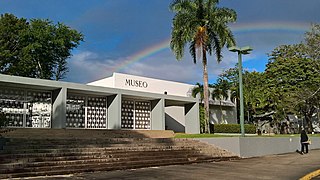José Caraballo | |
|---|---|
| Born | 1930 |
| Died | 1992 |
| Occupation | artist |
Jose Caraballo (born 1930 in Santurce, Puerto Rico) moved to New York City with his parents at the age of 14. In 1947 Jose studied graphics and sculpture in a Greenwich Village workshop. That same year he had the good fortune to meet the great Mexican artist Rufino Tamayo at the Rufino Tamayo Studio at the Brooklyn Museum of Art where Rufino Tamayo was teaching art. Jose Caraballo exhibited paintings in 1950 in Chicago. He then exhibited at the Oller-Campeche-Gallery in Puerto Rico, Galleria II, Galleria Tito, Allen Rich Galleries, Duncan Galleries in Paris, France, and many other Galleries throughout New York. Jose Caraballo also had exhibits at the Museum of the City of New York, Livingston College, Howard University in Washington, Cornell Medical Center, Mount Sinai Hospital, and El Museo del Barrio in NYC. Jose Caraballo has had extensive television coverage of his paintings and other works of art.
In 1979, while President of the Hispanic Arte League (H.A.L), Jose Caraballo organized the 1st Latin American Art Biennial in NYC. For that exhibition Jose invited his friend Rufino Tamayo to attend as guest of honor. Rufino Tamayo was by then the most famous living artist in Mexico so it was a great honor for Jose Caraballo that Rufino Tamayo accepted the invitation and came to NYC to spend a few weeks with Jose Caraballo and his family. Rufino Tamayo helped inspire the works in stencil that Jose Caraballo would create after that visit. Jose Caraballo was one of the first artists to depict the life and culture of the Taino Indians of Borinquen. Caraballo also explored other aspects of Puerto Rican culture and artistic horizons, through his paintings, drawings, graphics, and tapestries. He was awarded "The Palma Julia de Burgos" Cultural award in 1978.
In 1978 Jose Caraballo was included in the famous book "Painting and Sculpture of the Puerto Ricans" by Peter Bloch. This is part of what Peter Bloch wrote "It is Jose Caraballo who first made a specialty of Taino themes, in drawings, paintings, graphics and relief work. When he had thoroughly explored Borinquen's pre-history in his art, he continued with other aspects of Puerto Rican culture and history but also creates surrealist and semi-abstract work which is always ingenious and fascinating. In his paintings and drawings on Puerto Rican themes he cultivates a stylized realism. His horizons are wide; and he is one of the truly eminent Puerto Rican artists". Peter Bloch also included 4 images of linocuts and pen and ink drawings by Jose Caraballo in this book.
Jose Caraballo died in Collegedale, Tennessee in 1992 at the age of 62. His work continues to be exhibited throughout the US. [1]

Rufino del Carmen Arellanes Tamayo was a Mexican painter of Zapotec heritage, born in Oaxaca de Juárez, Mexico. Tamayo was active in the mid-20th century in Mexico and New York, painting figurative abstraction with surrealist influences.
Lorenzo Homar Gelabert was a Puerto Rican printmaker, painter, and calligrapher whose artwork stretches to three main workshops: Centro de Arte Puertorriqueño (CPA), DIVEDCO, and the Taller de Artes Gráficas of the Instituto de Cultura Puertorriqueña (ICP). Homar was also the designer of the logo of the Instituto de Cultura Puertorriqueña.
Byron Gálvez was a Mexican artist who was primarily known for his painting but also created sculpture, including monumental works. He was born in rural Hidalgo state, to a father who played jazz music and read literature, a rarity in 1930s rural Mexico. However, it exposed Gálvez to culture, even though this led to an interest in visual art rather than musing or writing. He went to Mexico City to study art at both the undergraduate and graduate level, but never completed his degrees, opting instead to begin career after his coursework. Before his first individual exhibition, his work was criticized by Justino Fernández, but all of the paintings were sold in advance to foreign buyers including American actor Vincent Price, who called Gálvez a “Mexican Picasso.” Gálvez then managed to replace the forty five paintings for the exhibition in a week. Since then he had individual and collective exhibitions in Mexico, the United States and other parts of the world. He concentrated on painting, which he is better known for, in the 1970s and 1980s, but moved on to sculpture, including monumental works later in his career. Recognitions for Gálvez's work include membership in the Salón de la Plástica Mexicana, a retrospective at the Palacio de Bellas Artes and two books published about his life.

Julio Rosado del Valle, was an internationally known abstract expressionist.

El Museo del Barrio, often known simply as El Museo, is a museum at 1230 Fifth Avenue in Upper Manhattan, New York City. It is located near the northern end of Fifth Avenue's Museum Mile, immediately north of the Museum of the City of New York. Founded in 1969, El Museo specializes in Latin American and Caribbean art, with an emphasis on works from Puerto Rico and the Puerto Rican community in New York City.

Ángel Botello was a Spanish-Puerto Rican painter, sculptor and graphic artist. He was dubbed "The Caribbean Gauguin" for his use of bold colors and depictions of island life. Botello is considered one of the greatest Latin American post-modern artists and recognition and demand for his artwork continues to grow today, fetching unprecedented auction prices.

Obed Gómez a.k.a. "The Puerto Rican Picasso" is a Puerto Rican artist of modern art.
Elizam Escobar was a Puerto Rican art theorist, poet, visual artist and writer. He served a lengthy prison sentence after being convicted while a member of the FALN.

Antonio Broccoli Porto is an American artist, visual artist and sculptor.
Puerto Rico is a territory of the United States. Puerto Ricans are the people of Puerto Rico, the inhabitants, and citizens of the Commonwealth of Puerto Rico, and their descendants. Puerto Rico is home to people of many different national origins as well. The people of Puerto Rico are a mix of European, Taino, and African ancestry. The island's unique mixture is represented in the extreme styles of 'Puerto Rican art.

Carlos Amorales is a multidisciplinary artist who studied at the Gerrit Rietveld Academy and the Rijksakademie in Amsterdam. The most extensive researches in his work encompass Los Amorales (1996-2001), Liquid Archive (1999-2010), Nuevos Ricos (2004-2009), and a typographic exploration in junction with cinema (2013–present).
Claudio Nelson Bravo Camus was a Chilean hyperrealist painter. He was greatly influenced by Renaissance and Baroque artists, as well as Surrealist painters such as Salvador Dalí. He lived and worked in Tangier, Morocco, beginning in 1972. Bravo also lived in Chile, New York and Spain. He was known mainly for his paintings of still lifes, portraits and packages, but he had also done drawings, lithographs, engraving and figural bronze sculptures. Bravo painted many prominent figures in society, including caudillo Franco of Spain, President Ferdinand Marcos and First Lady Imelda Marcos of the Philippines and Malcolm Forbes.
Miguel Cubiles is a Cuban-Mexican artist, specializing in paintings, ceramics and engravings.
Rafael Trelles is a postmodern artist from Puerto Rico.

Miguel Pou Becerra was a Puerto Rican oil canvas painter, draftsman, and art professor. Together with José Campeche and Francisco Oller, he has been called "one of Puerto Rico's greatest masters." He was an exponent of the impressionist movement. During his life he exhibited in 64 shows, of which 17 were solo, and won five gold medals.

Jason Villegas is currently a San Francisco based contemporary artist. He has exhibited across the United States and internationally. Villegas' work utilizes a wide spectrum of mediums including sculpture, installation, painting, drawing, textile, video and performance. He has created his own artistic realm and visual language in which to explore concepts such as globalism, evolution, sexuality, cosmology, and consumerism. Motifs in Villegas' artworks include fashion logos, animal hybrids, weaponry, sales banners, clothing piles, anuses, cosmic debris, taxidermy, bear men, amorphous beasts, religious iconography, and party scenarios.

Jazzamoart is a Mexican artist best known for his painting which is mostly connected to jazz music in some way. Born Francisco Javier Vázques Estupiñán in Irapuato, Guanajuato, his talent was recognized early and he took his professional name from his dual passions of jazz and art. He is best known as a painter with over 400 individual and collective exhibitions on several continents, but he has also done monumental sculpture, stage scenery and has collaborated with musicians. He lives in Mexico City.

Ealy Mays is a Paris-based African-American contemporary artist. His work has been exhibited in Mexico's Galeria Clave, Paris’ Carrousel du Louvre, Mexico's annual José Clemente Orozco Art competition, and New York's Guggenheim museum, to name a few. Legendary painter Henry O. Tanner was the first African American to exhibit at the Louvre in 1897. Mays’ 2005 “Migration of the Superheroes” exhibition at the Carrousel du Louvre makes him one of the few African-American artists to date to follow Tanner's footsteps to the Louvre.

Vladimir Cora is a Mexican painter and sculptor based in the state of Nayarit, whose work has been recognized by various awards and membership in the Salón de la Plástica Mexicana. He discovered art at age fifteen, after deciding that he could not be a musician. He received training in Tijuana and Mexico City, with his first success in the 1980s. His style has been described as neo-figurative, minimalist and coarse, and he creates his works in series usually related to the apostles, flowers, birds and women, especially those related to Nayarit. He has had over 150 individual exhibitions both in Mexico and abroad and continues to work from his home state.

The Museum of History, Anthropology and Art of the University of Puerto Rico — often shortened to Museum of the UPR or MAHA — is a university museum dedicated to anthropology, archaeology and the history of art of Puerto Rico located on the grounds of the University of Puerto Rico, Río Piedras Campus. Officially dating to 1951, this museum is the oldest in Puerto Rico with its first collection being even older dating to 1914, donated by then Resident Commissioner Federico Degetau.